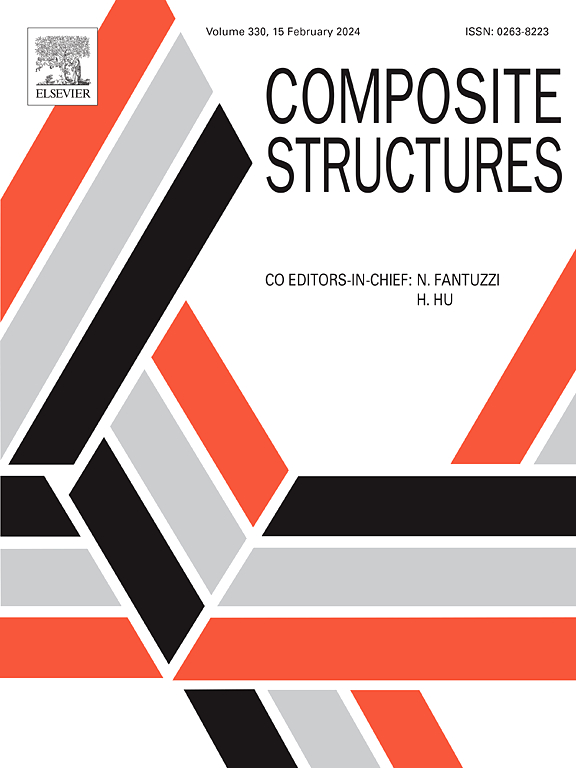Are sutural structures in biology the optimal topological design?
IF 6.3
2区 材料科学
Q1 MATERIALS SCIENCE, COMPOSITES
引用次数: 0
Abstract
Sutural structures are widely observed in biology and attract lots of attention. However, the majority of current research focuses on understanding the characteristics of sutural structures, with little research investigating whether sutural structures in biology are the optimal topological design. To disclose this mystery, this paper summarizes the characteristics of sutural structures found in nature and characterizes their shapes by several important geometric parameters. By establishing analytical models and finite element models of sutural structures, we investigate the stiffness, strength, and damping energy dissipation properties of sutural structures in biomaterials and optimized the sutural shapes based on genetic algorithm (GA) under static tensile and shear loading, as well as dynamic uniaxial loading. Under static loading, sutural structures with interlocking features demonstrate great stiffness and strength. Under dynamic loading, the frequency of the external excitation and the sutural shapes jointly determine the energy dissipation performance. We find that the sutural shapes in typical biomaterials evolve to optimal shapes to achieve certain optimal mechanical properties. Additionally, genetic algorithms provide a paradigm for the design of materials with multi-objectives, allowing for the design of sutural structures that balance various mechanical properties.
求助全文
约1分钟内获得全文
求助全文
来源期刊

Composite Structures
工程技术-材料科学:复合
CiteScore
12.00
自引率
12.70%
发文量
1246
审稿时长
78 days
期刊介绍:
The past few decades have seen outstanding advances in the use of composite materials in structural applications. There can be little doubt that, within engineering circles, composites have revolutionised traditional design concepts and made possible an unparalleled range of new and exciting possibilities as viable materials for construction. Composite Structures, an International Journal, disseminates knowledge between users, manufacturers, designers and researchers involved in structures or structural components manufactured using composite materials.
The journal publishes papers which contribute to knowledge in the use of composite materials in engineering structures. Papers deal with design, research and development studies, experimental investigations, theoretical analysis and fabrication techniques relevant to the application of composites in load-bearing components for assemblies, ranging from individual components such as plates and shells to complete composite structures.
 求助内容:
求助内容: 应助结果提醒方式:
应助结果提醒方式:


